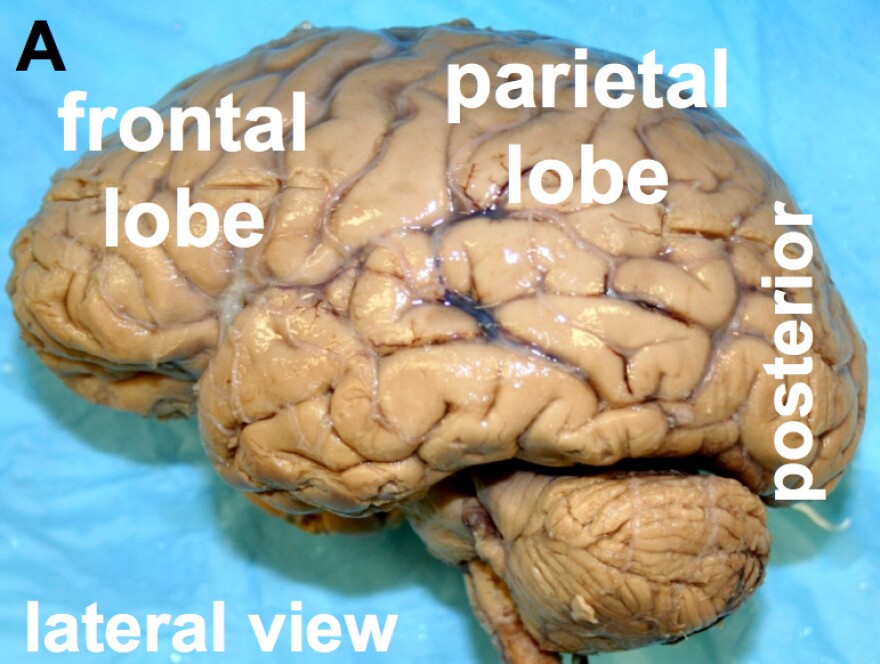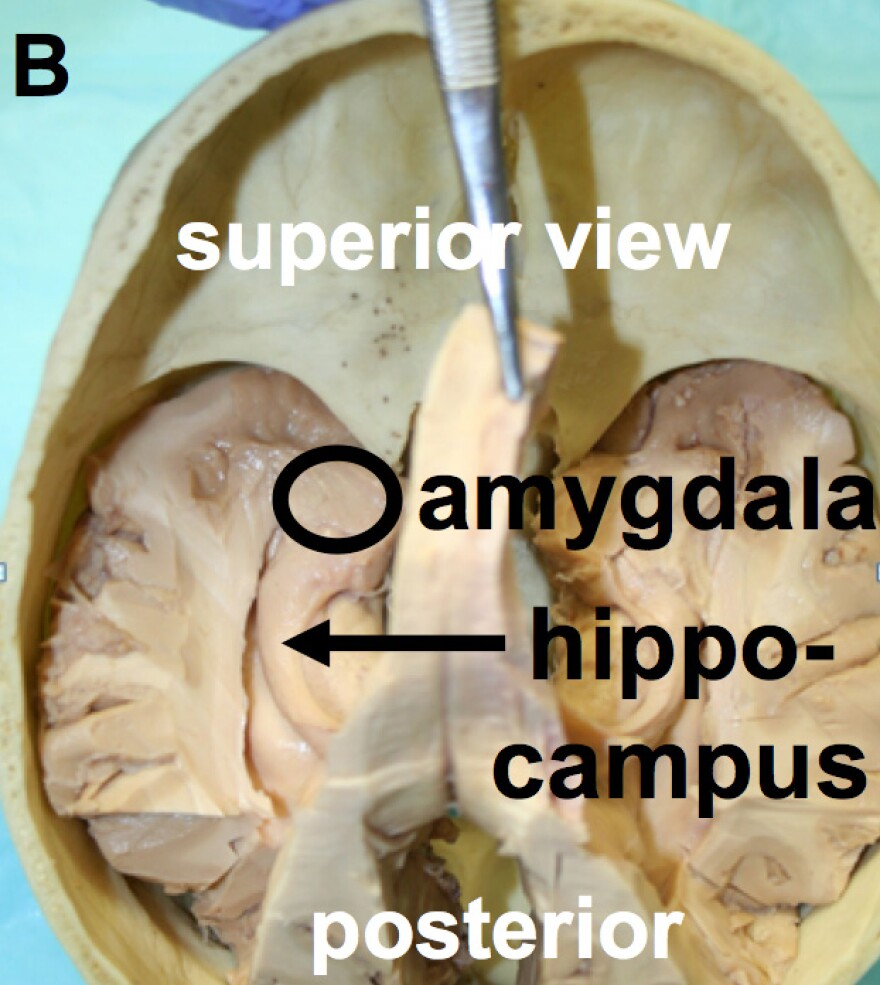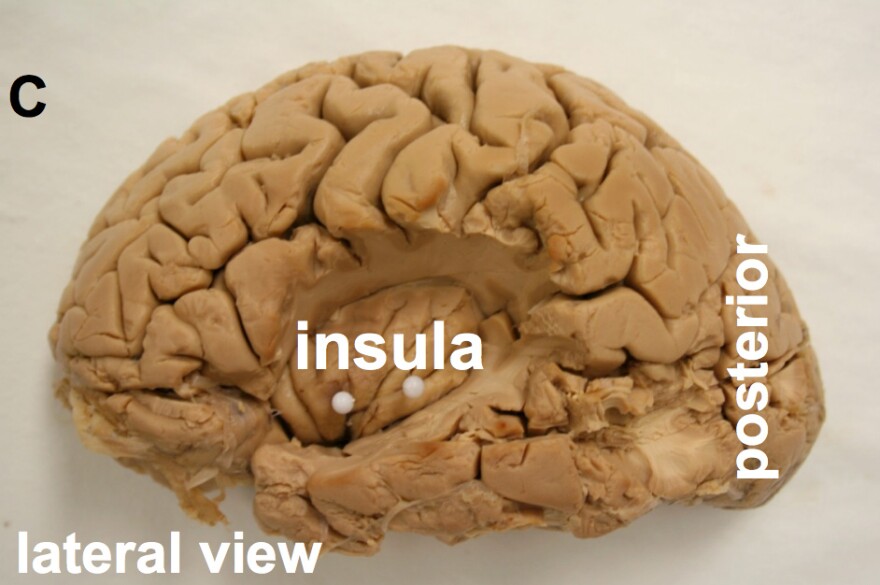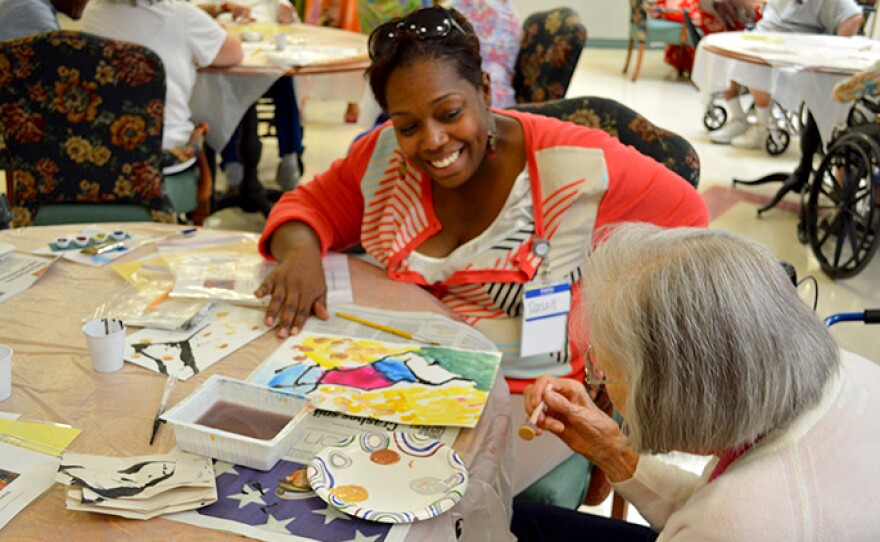According to Maslow’shierarchy of needs, creativity is at the pinnacle of being human. As such, the human brain is a creative brain, which makes the arts a brain thing. Alzheimer’s disease (and related disorders like Lewy body dementia and vascular dementia) is also a brain thing. A major cause of suffering in persons with dementia and their care providers is the behavioral and psychological symptoms of dementia, including depression, apathy, anxiety and agitation. Can the arts reduce these complications and awaken the person inside? The answer is yes, which is why dementia care is increasingly embracing arts-based approaches.
There is good strength of evidence from multiple randomized controlled trials that music therapy reduces challenging behaviors in this population. Small-scale studies with art, dance and drama therapies report benefits on various other measures. Each of these therapies is provided by credentialed professionals who are dually trained in art therapy and psychotherapy/behavioral therapy. Yet other small-scale studies report that arts-engagement programs by community-based artists who are not certified therapists can also have beneficial effects and promote community awareness.
The neurobiological mechanism for the benefits of the arts in persons with dementia may relate to the new view of large scale integrated neurocognitive networks, which is causing a paradigm shift in modern psychiatry and neurology. Three networks can be emphasized:

1) The central executive network, which includes parts of the frontal and parietal lobes of the cerebral cortex (Figure 1A) and is damaged by Alzheimer’s disease. It relates to attention and to the making of mental notes (“working memories”) for things to be remembered.

2) The default network is also damaged in Alzheimer’s disease and includes structures like the hippocampal formation (Figure 1B) that are critically related to short-term memory and the formation of long-term memories related to facts and to life events (“episodic memories”).

And 3) the salience network, which is relatively spared even in the end stages of Alzheimer’s disease. It attaches emotional significance to events and includes various structures like the amygdala (Figure 1B), insular cortex (Figure 1C), parts of the brain reward system (not shown) and parts of the anterior cingulate gyrus (Figure 1D). Functional imaging studies show that familiar music activates much of the salience network. We propose that activation of the salience network causes the “awakening” of persons with advanced dementia by familiar music as seen in the documentary, Alive Inside.

It is clear that the human brain is a creative brain and that art therapies and art-engagement activities facilitate optimal health. The brain is “the universe between our ears” and “the last great frontier of science” (Aravich, TEDx NASA video). The arts and humanities fire that universe to promote wellbeing and creativity. Hence, it is time to fully integrate the arts and humanities into science, technology, engineering and math (STEM) education as well as into health care, particularly for persons with dementia and other behavioral disorders. Science matters. But so do the arts and humanities.
Links to more information about Arts programs for people with dementia:
- Tidewater Arts Outreach and Southeastern Virginia Chapter of the Alzheimer’s Association, Videos: Music and Movement for Elders with Dementia and Singing for Elder Health and Wellness
- ArtLinks Tours, Virginia Museum of Fine Arts, Richmond, VA
- Art for the Journey, Richmond, VA
- Opening Minds Through Art, Scripps Gerontology Center, Oxford, Ohio
- Meet Me, Museum of Modern Art, New York, New York
- National Center for Creative Aging
- PBS episode "I Remember Better When I paint"
- Alzheimer's Poetry Project
- Artful Aging Resources PDF
- American Art Therapy Association
- Creative Arts Therapy and Expressive Arts Therapy
- Arts and Healing Organizations
- National Endowment for the Arts: Examples of Arts in Healthcare Programs
Article by: Paul F. Aravich, Ph.D, Neuroscientist and Professor, Eastern Virginia Medical School; Tidewater Arts Outreach; Southeastern Virginia Chapter of the Alzheimer’s Association, I Need a Lighthouse Foundation for teen depression and suicide awareness, Chas Foundation for persons with mental disorders, and Buckley Foundation for the survivors of brain injury and their families.
MaryAnn Toboz, Founder and Executive Director, Tidewater Arts Outreach; and Southeastern Virginia Chapter of the Alzheimer’s Association
Mary Roberts, Ed.S. and ATR-BC, Assistant Professor and Art Therapy Program Director, Eastern Virginia Medical School


